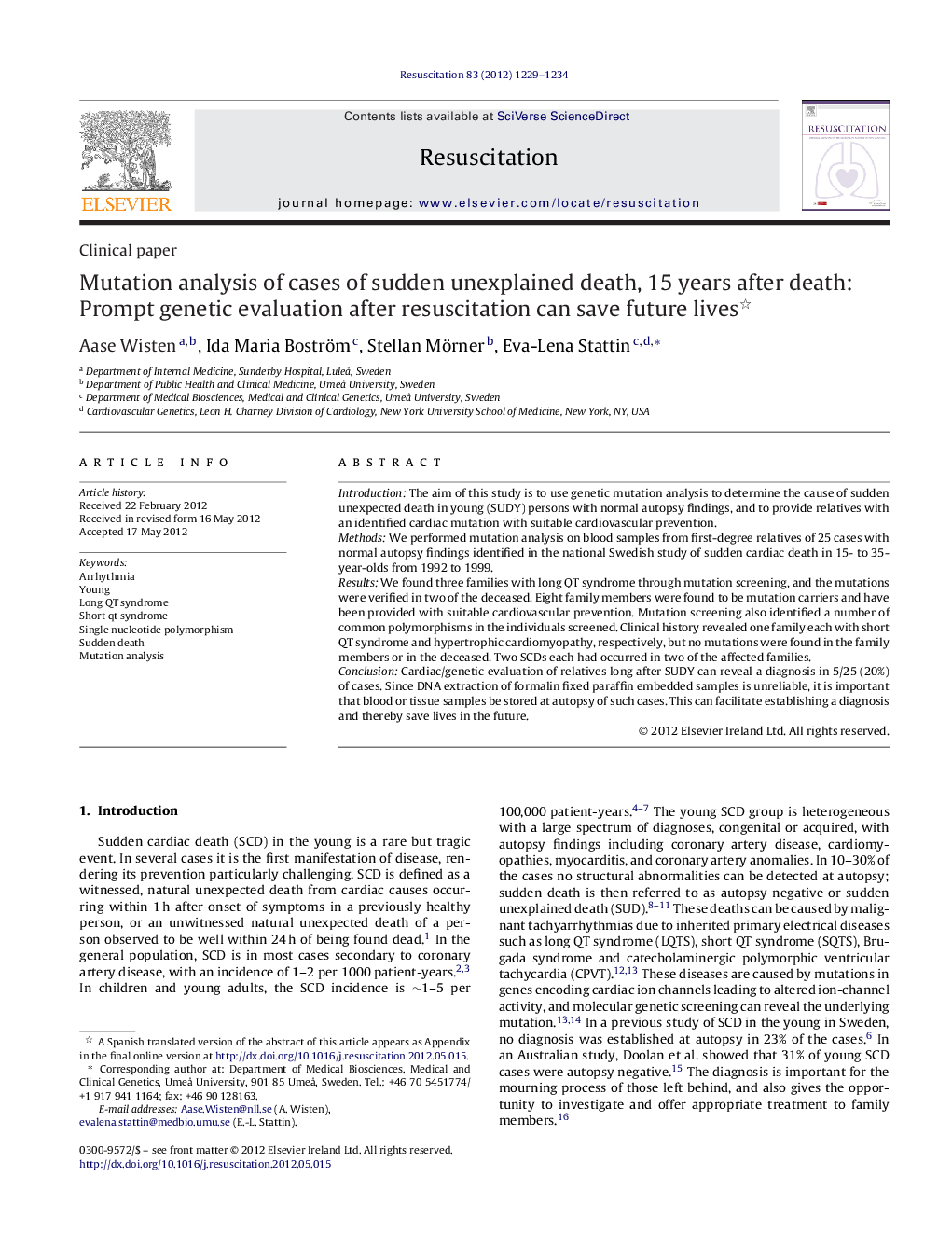| Article ID | Journal | Published Year | Pages | File Type |
|---|---|---|---|---|
| 3008910 | Resuscitation | 2012 | 6 Pages |
IntroductionThe aim of this study is to use genetic mutation analysis to determine the cause of sudden unexpected death in young (SUDY) persons with normal autopsy findings, and to provide relatives with an identified cardiac mutation with suitable cardiovascular prevention.MethodsWe performed mutation analysis on blood samples from first-degree relatives of 25 cases with normal autopsy findings identified in the national Swedish study of sudden cardiac death in 15- to 35-year-olds from 1992 to 1999.ResultsWe found three families with long QT syndrome through mutation screening, and the mutations were verified in two of the deceased. Eight family members were found to be mutation carriers and have been provided with suitable cardiovascular prevention. Mutation screening also identified a number of common polymorphisms in the individuals screened. Clinical history revealed one family each with short QT syndrome and hypertrophic cardiomyopathy, respectively, but no mutations were found in the family members or in the deceased. Two SCDs each had occurred in two of the affected families.ConclusionCardiac/genetic evaluation of relatives long after SUDY can reveal a diagnosis in 5/25 (20%) of cases. Since DNA extraction of formalin fixed paraffin embedded samples is unreliable, it is important that blood or tissue samples be stored at autopsy of such cases. This can facilitate establishing a diagnosis and thereby save lives in the future.
